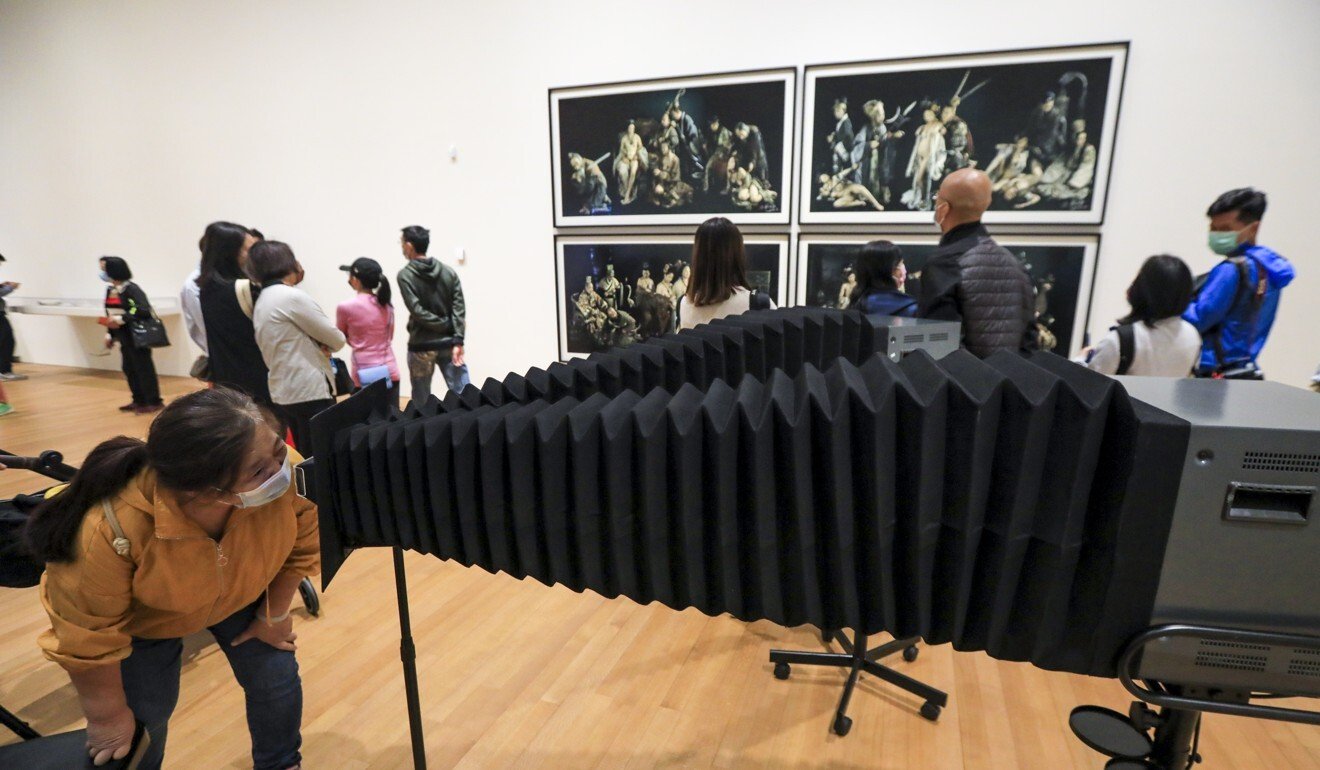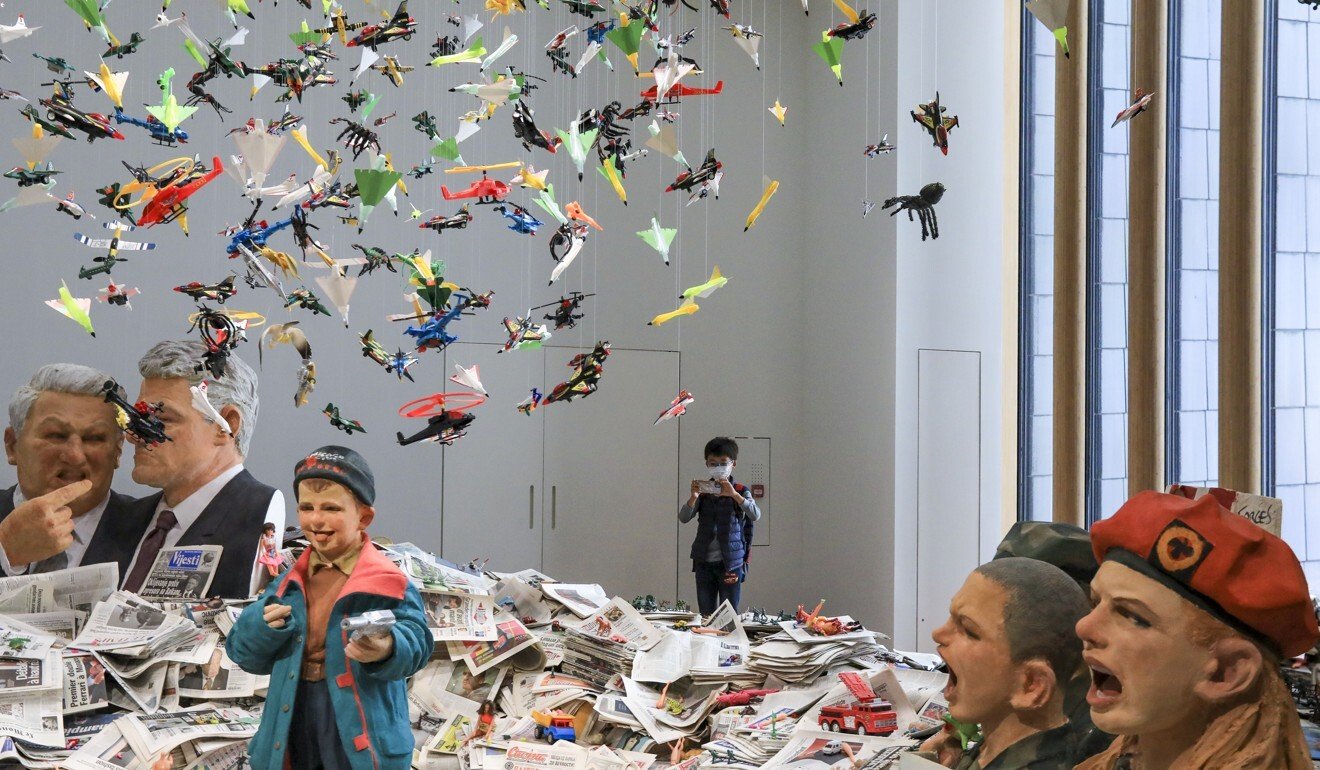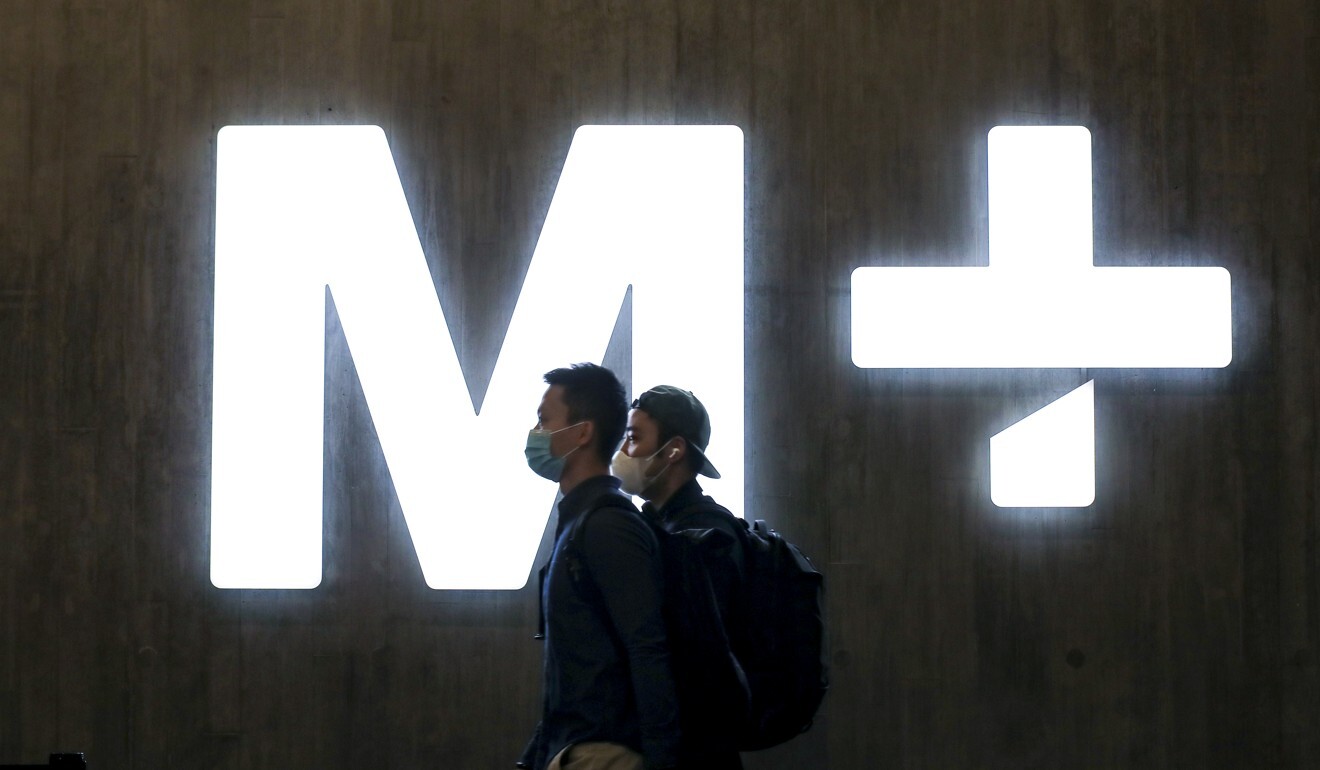
More than 11,000 people throng Hong Kong’s M+ museum on opening day, venue closed to walk-ins over weekend
- Some have been waiting years for the opening, while others are drawn in by a recent controversy over a work by dissident Chinese artist Ai Weiwei
- A few visitors, however, complain about admission arrangements, and that facilities in and around the museum do not appear to be ready to handle crowds
The overwhelming response prompted the museum to announce in the evening that it would not accept walk-in visitors over the weekend. Doors will open from 10am to 6pm only for those who had registered online.
“In anticipation of a large number of visitors, M+ strongly recommends all visitors to make reservations ahead of their visits,” a spokeswoman said.
Appointments for different entry times can be made on the museum’s website. As of 5pm on Friday, more than 11,000 people had visited the museum, with long waits anticipated for queues into its galleries.
While many visitors applauded the free entry, the facility’s aesthetic charms and the high quality of the exhibitions, a few complained that arrangements for admission were confusing, and that the facilities in and around the museum were not ready to handle the crowds.

Joyce Ho, who came with her daughters, Kaylyn, eight, and Scarlet, 10, said she was pleased Hong Kong finally had an art museum that could make locals proud.
“We’ve heard about the M+ museum for so many years, it is really touching to get to see it finally,” Ho said.
Museums were vital to a city’s identity, she added, noting she had taken her daughters to visit ones in London and Paris.
Jennifer Eagleton, 61, a teacher from the UK who has lived in Hong Kong for 23 years, said: “I thought the crowd would be limited, and I could get to walk around more freely.” Even so, she appreciated the free entry being offered for the museum’s first year.
“Compared to museums in the UK, it usually costs at least £20 (HK$209) or more, so I would say this is fair enough,” she said. “I can come again.”
10 highlights of the opening shows at M+ museum in Hong Kong
However, one visitor who gave only her surname, To, said she did not feel the museum was ready for the public, adding she was unimpressed by the design of the building.
“One of the lifts has broken down, and there is a lack of signs showing us where to go,” she said. “The nearby traffic is confusing too. There were children and elderly people coming by bus, and they had to jaywalk because there was a lack of zebra crossings. This is really dangerous.”
Calling the opening “rushed”, she added: “They clearly are not ready for such a large crowd.” She also said staff could not tell her at first if she could enter, as she had not made an online reservation.
At the cafe, meanwhile, customers complained about the lack of hot food and open tables, all four of which were full. Cafe staff said they only served salad, coffee and ice cream.
Some visitors made it clear that their purpose in coming was to see dissident Chinese artist Ai Weiwei’s works after one piece in particular drew criticism in recent months from the pro-establishment camp for depicting a middle finger raised at the Gate of Heavenly Peace in Beijing.

Henry Tang Ying-yen, chairman of the West Kowloon Cultural District (WKCD) Authority, said on Thursday that although some of Ai’s works were on display in the six main exhibitions, his series containing the image of the middle finger in Tiananmen Square would require “further review”.
While that piece was not on display on Friday, 48-year-old housewife Florence Ho made a beeline for Ai’s Whitewash – a work featuring a series of ceramic urns, some of them painted white – and his Chang’an Boulevard, a video of the view from the titular road, which runs through Beijing.

“It was the talk of the town, so I must come to see it. Art is art. Politics and censorship should not take part in it,” Ho said, adding she hoped the museum would display the artist’s more controversial works too.
Ho noted that the museum had not entirely avoided mentioning the 1989 Tiananmen crackdown, as an introduction plaque for the gallery housing Ai’s works stated that Chinese artists had turned to paintings as a means of converting a sense of apathy and loss “in the aftermath of the Tiananmen Square protests”.
“It seems a ban is not absolute – there is still room to mention politically sensitive subjects, although in a [very mild tone],” Ho said.

Another painting widely known for its political undertones was Wang Xingwei’s New Beijing, an oil piece showing two injured emperor penguins, believed to be a satirical reference to the crackdown.
Danny Waxkrish, an exchange student from the UK in town for about two months, said he also wanted to see Ai’s works: “I want to see what they are allowed to show, as well as what they are not allowed to show.”

A teacher on his day off and who only gave his name as Ricky, said he was particularly impressed by the monumental project Asian Field (2003) by British artist Antony Gormley, who invited some 300 Xiangshan villagers to create 200,000 sculptures, each one a unique piece, with the exhibits filling an entire room.

“I was stunned by the presentation, as it shows how the identity of an individual can be overshadowed by a sense of collectiveness,” he said, adding he would recommend a visit by his students.
He added: “Art has always been a high-end and expensive thing in Hong Kong, and it should not be the case. I hope with this museum, art can become more approachable and enjoyable for most people.”
Hong Kong’s M+ will display works by Ai Weiwei, but also ‘comply with law’
The M+, with its name suggesting it is more than just a museum, is the crown jewel of the WKCD, a waterfront arts hub that the authority has promised will turn Hong Kong into Asia’s cultural capital.
The museum’s doors opened at 10am on Friday, with the first batch of visitors, who had stood in line since 9am, applauding and cheering as they headed inside. Some even used their phones to live-stream the moment they set foot in the building, shaped like a giant inverted “T”.

Emotions ran high inside, with curators and staff hugging and congratulating each other, and even shedding a few tears.
Doryun Chong, deputy director of curatorial and chief curator of M+, told the Post he was overpowered by the joy seen on visitors’ faces when they entered the building.
“This is something we have worked on for so many years. To finally see the excitement of visitors, it is very powerful.”

M+ director Suhanya Raffel said it was a touching moment for her. She was happy with the opening arrangements and confident that the exhibitions would stand up to public scrutiny.
“A museum without audiences is a museum without a soul. It is a wonderful thing that now we get to welcome the visitors,” Raffel told the Post.
In a speech, she also stressed the museum would ensure its exhibitions complied with the law, including the national security legislation.

